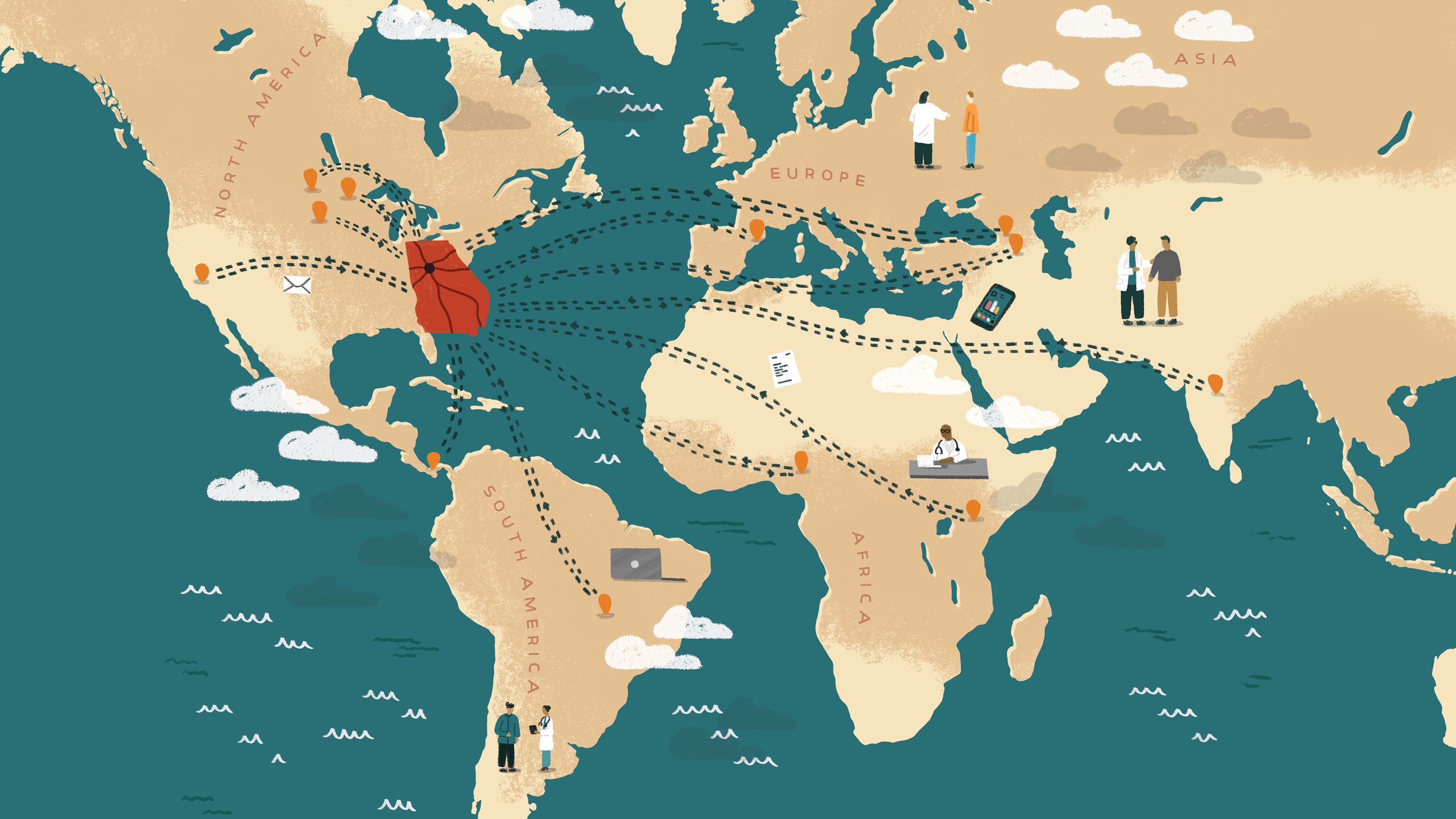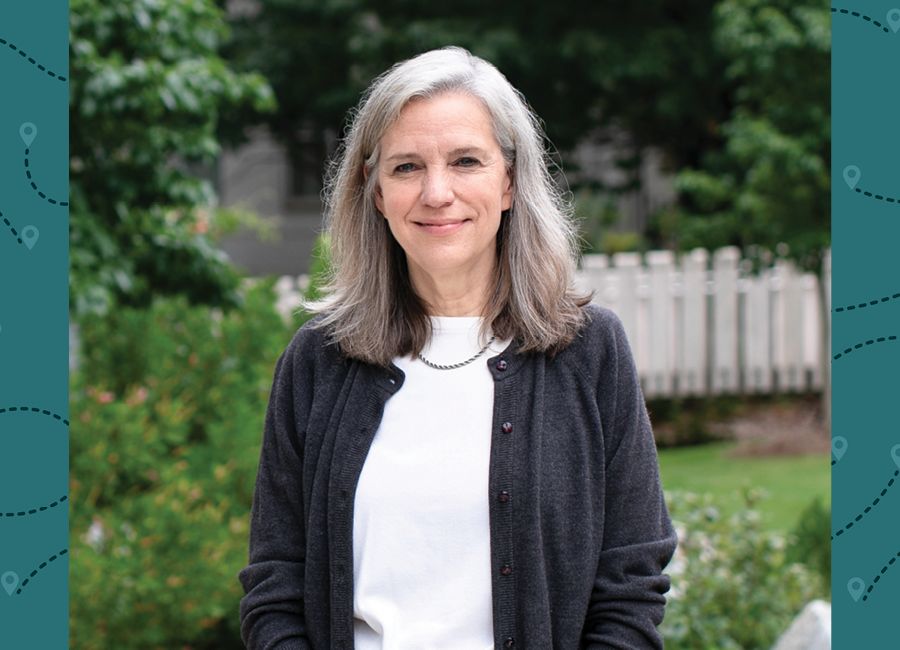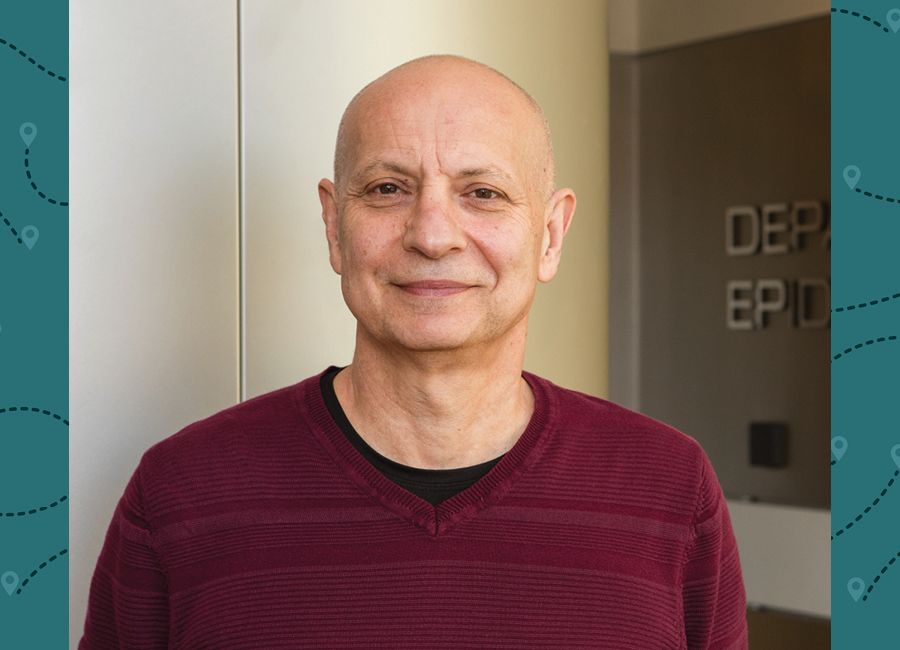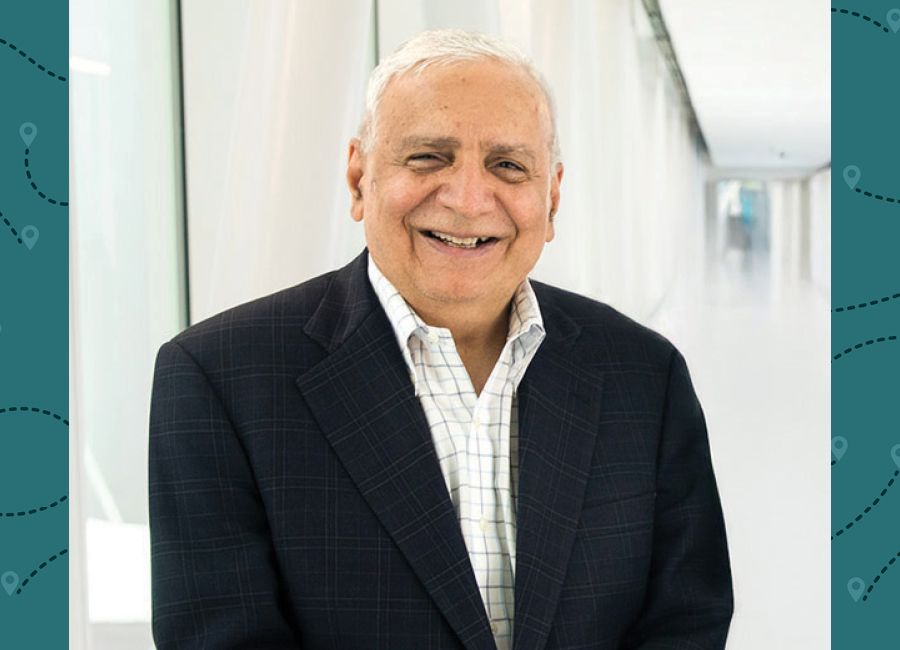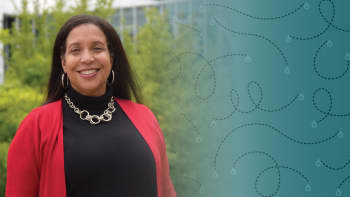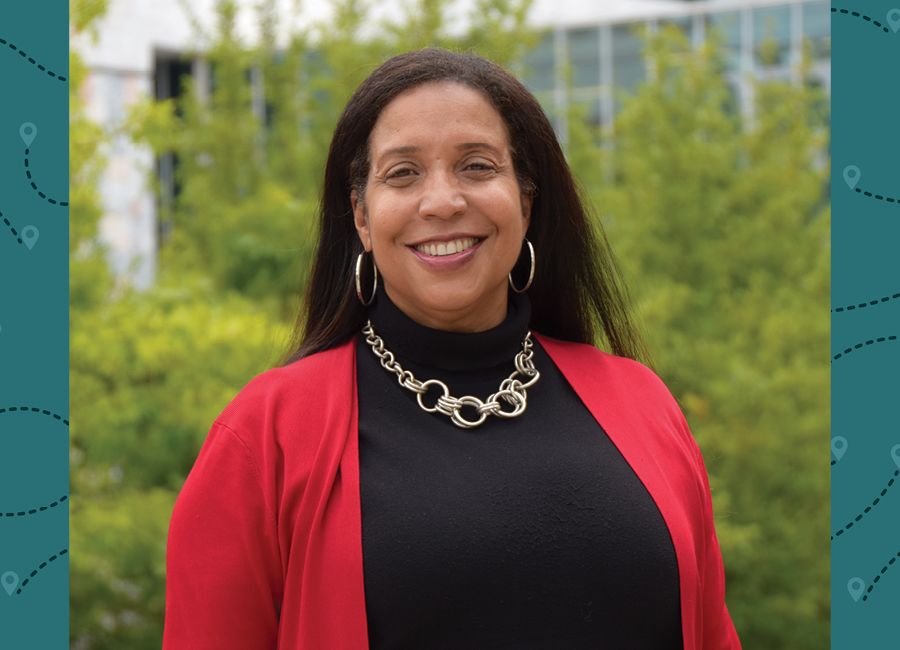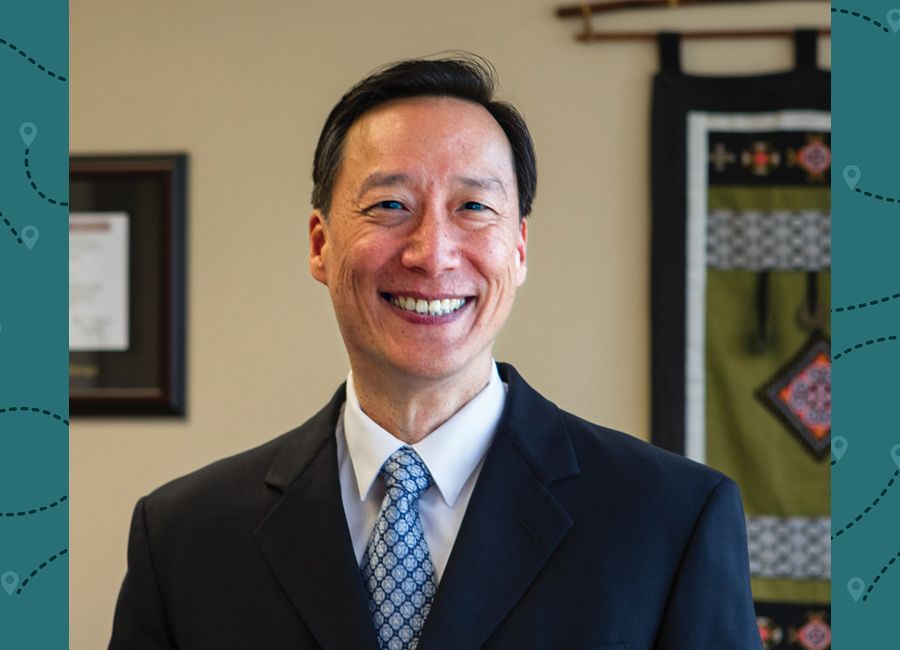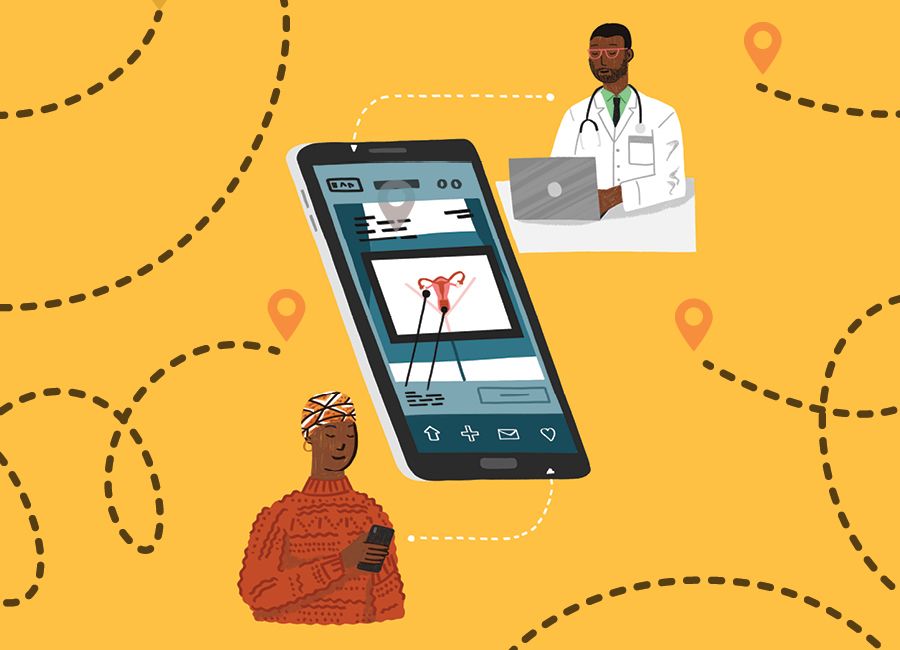How Collaborations Abroad Strengthen Communities at Home
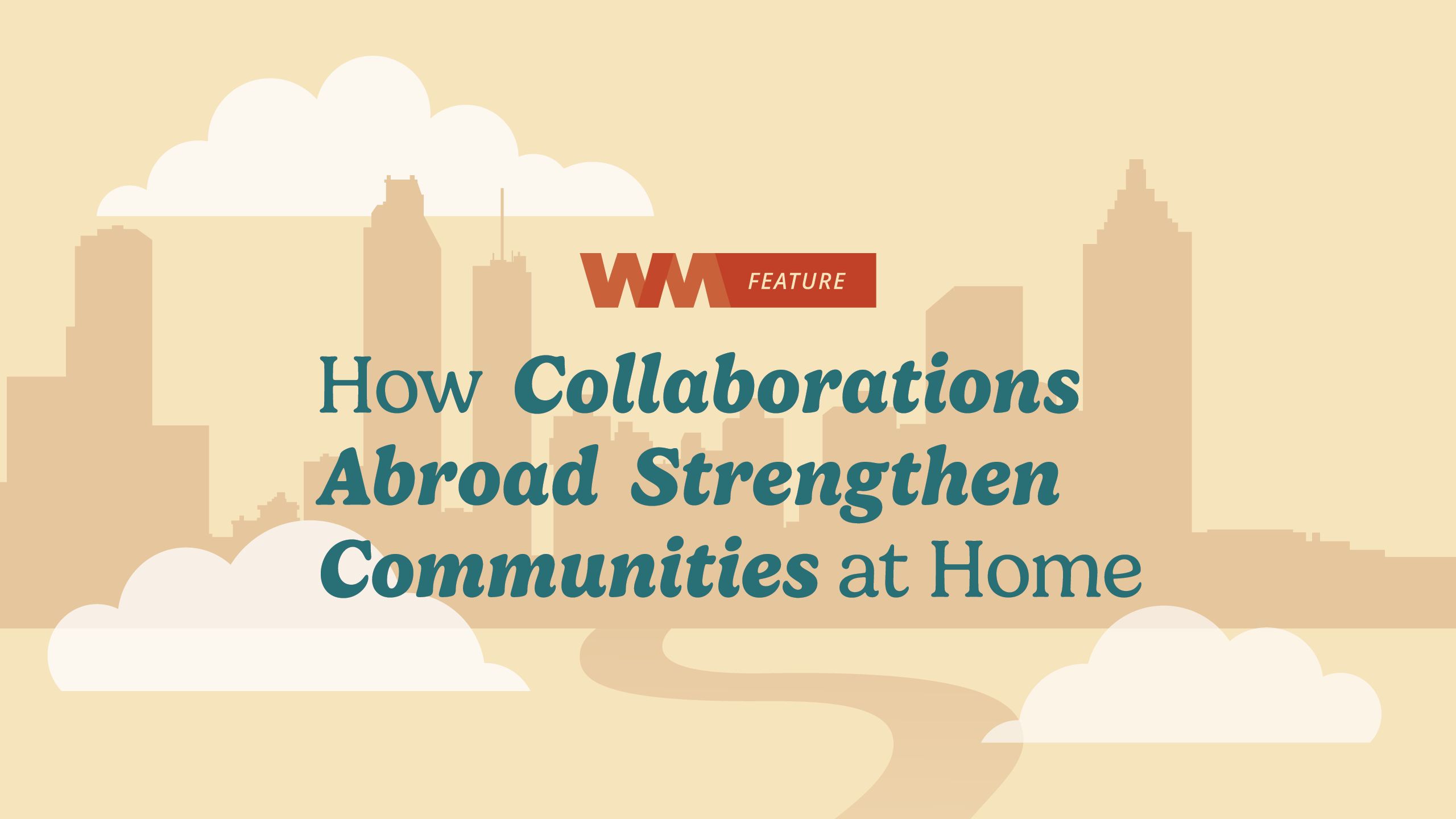
Winship researchers share expertise and learn from global colleagues
Cancer wears different faces around the world. In some regions, it’s driven by infectious agents such as human papilloma virus (HPV); in others, by behaviors such as cigarette smoking or exposure to environmental hazards like polluted air or water. Wherever it appears, and in whatever form, cancer disrupts lives.
Because cancer is a global challenge, Winship Cancer Institute of Emory University is part of an international network of doctors and scientists researching and working to advance knowledge and improve care for people living with cancer here in the United States and around the world.
“What we learn here is applicable to people in other parts of the world, and what we learn in other parts of the world is applicable to patients we serve in our communities here in Georgia,” says Suresh S. Ramalingam, Winship’s executive director and the Roberto C. Goizueta Distinguished Chair for Cancer Research at Emory University School of Medicine. He notes that the interactions of Winship’s researchers with their counterparts in other countries “inform our research and our ability to adapt in a rapidly changing world in every single way.”
Here are a few examples of Winship’s work around the world where it is actively involved in both sharing expertise and increasing its own understanding of the most effective ways to detect, diagnose, prevent, treat and live beyond cancer.

Click to enlarge illustration
Click to enlarge illustration
Cancer wears different faces around the world. In some regions, it’s driven by infectious agents such as human papilloma virus (HPV); in others, by behaviors such as cigarette smoking or exposure to environmental hazards like polluted air or water. Wherever it appears, and in whatever form, cancer disrupts lives.
Because cancer is a global challenge, Winship Cancer Institute of Emory University is part of an international network of doctors and scientists researching and working to advance knowledge and improve care for people living with cancer here in the United States and around the world.
“What we learn here is applicable to people in other parts of the world, and what we learn in other parts of the world is applicable to patients we serve in our communities here in Georgia,” says Suresh S. Ramalingam, Winship’s executive director and the Roberto C. Goizueta Distinguished Chair for Cancer Research at Emory University School of Medicine. He notes that the interactions of Winship’s researchers with their counterparts in other countries “inform our research and our ability to adapt in a rapidly changing world in every single way.”
Here are a few examples of Winship’s work around the world where it is actively involved in both sharing expertise and increasing its own understanding of the most effective ways to detect, diagnose, prevent, treat and live beyond cancer.
Adapting interventions for diverse populations

“Smoke-Free Homes: Some Things are Better Outside” is an evidence-based program developed at Emory and included on the National Cancer Institute’s list of evidence-based cancer control programs. The intervention consists of four components: three mailings of educational print materials, including a toolkit for creating a smoke-free home and one coaching call designed to help participants create a smoke-free home using the five steps outlined in the print materials.
Michelle C. Kegler, director of the Emory Prevention Research Center, professor in the Department of Behavioral, Social and Health Education Sciences at Rollins School of Public Health of Emory University and a member of Winship’s Cancer Prevention and Control Research Program, was centrally involved in developing “Smoke-Free Homes.” In the years since its inception, the intervention has been adapted in a number of U.S. states and several countries to make it relevant in different cultures.
Kegler says partnerships with the U.S. Centers for Disease Control and Prevention in the country of Georgia and in Armenia with the National Ministry of Health and the American University of Armenia, allowed her and her team to adapt the “Smoke-Free Homes” campaign for those countries. She says, “They conducted focus groups with people who smoke and people who live with someone who smokes, and changed out the pictures, translated them into their languages and then got local reactions to the intervention materials.”
Making the materials culturally relevant included adjustments such as adding a father to the photos that had depicted a mother and child wherein the mother was a smoker. In those countries, men smoke at 10 times the rate of women and there isn’t strong awareness about secondhand smoke. Because fewer people have household pets, they switched the images of a little boy and a dog in the materials—showing the dog peeing on a couch (best done outside)—to a boy playing with a soccer ball, also best done outside.
“Smoke-Free Homes” has been adapted for use in Brazil and Spain, as well as for several subpopulations within the U.S. Kegler says, “We’re working with tribes here in the United States, in the Dakotas and Michigan, where we’re doing almost the same process of adapting the intervention for the local context and then testing it.” For example, the images in the materials that had featured a young African American child weren’t relevant for the tribal communities. It also required a sensitivity to the tribes’ traditional uses of tobacco.
Kegler has been contacted by colleagues within the U.S. who want to adapt “Smoke-Free Homes” for ethnic subpopulations in their communities. One in Minnesota wants to adopt the program for Somalis living in the state. Another colleague in New York City wants to adopt it for Chinese Americans living there. Still another in Texas is trying it out in Spanish. Right here in the state of Georgia, a partnership with Georgia State University is exploring the possibility of adapting the program to fit in their nationally disseminated parenting program for families interacting with child protective services.
Helping people to create smoke-free homes is important for cancer prevention. Kegler says, “I like to do research that focuses on the home as a setting because people spend so much time in their homes. So, the better the home is structured to promote health, the more likely you are to engage in healthy behaviors.”
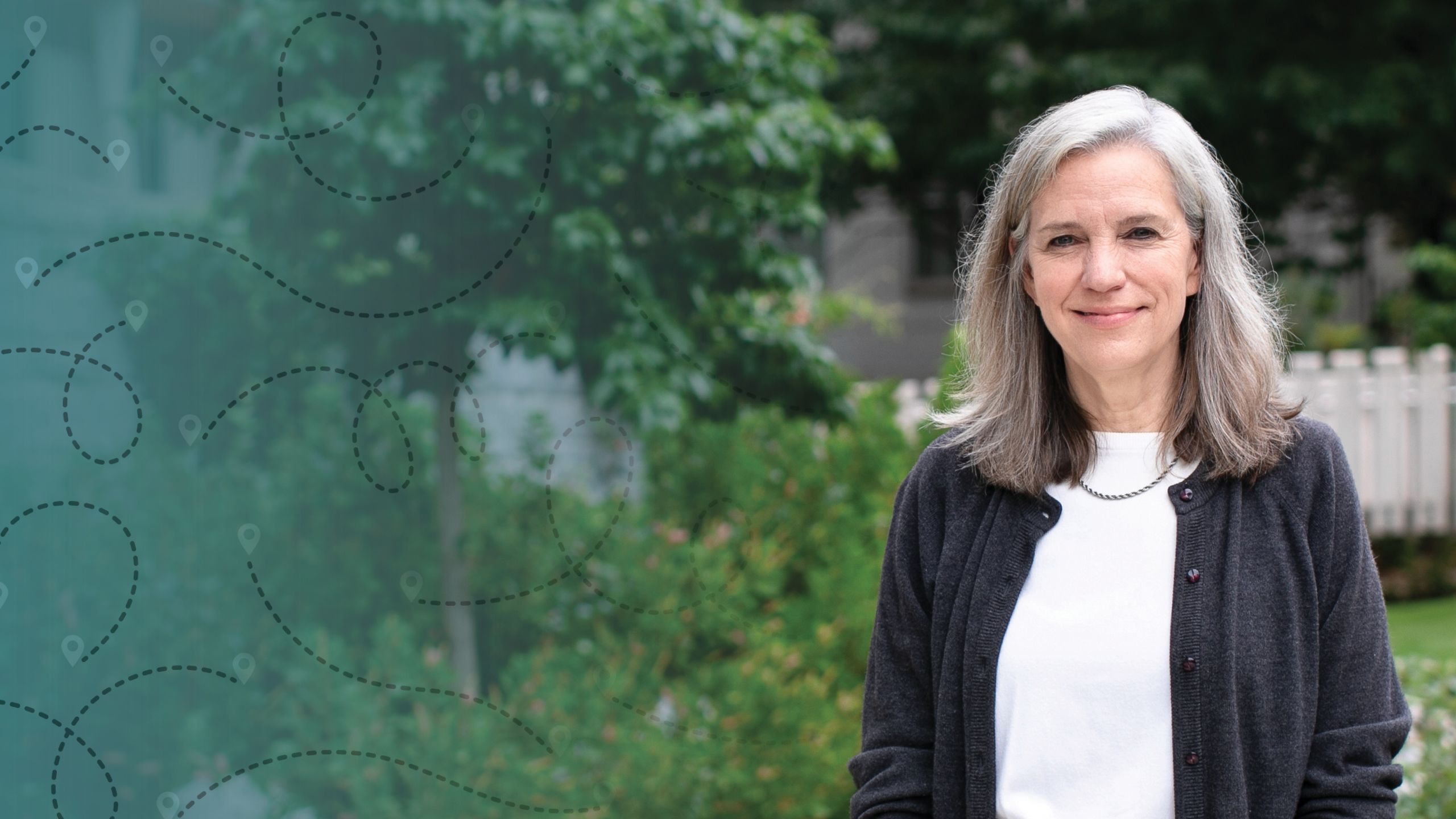
Michelle C. Kegler
Michelle C. Kegler
“Smoke-Free Homes: Some Things are Better Outside” is an evidence-based program developed at Emory and included on the National Cancer Institute’s list of evidence-based cancer control programs. The intervention consists of four components: three mailings of educational print materials, including a toolkit for creating a smoke-free home and one coaching call designed to help participants create a smoke-free home using the five steps outlined in the print materials.
Michelle C. Kegler, director of the Emory Prevention Research Center, professor in the Department of Behavioral, Social and Health Education Sciences at Rollins School of Public Health of Emory University and a member of Winship’s Cancer Prevention and Control Research Program, was centrally involved in developing “Smoke-Free Homes.” In the years since its inception, the intervention has been adapted in a number of U.S. states and several countries to make it relevant in different cultures.
Kegler says partnerships with the U.S. Centers for Disease Control and Prevention in the country of Georgia and in Armenia with the National Ministry of Health and the American University of Armenia, allowed her and her team to adapt the “Smoke-Free Homes” campaign for those countries. She says, “They conducted focus groups with people who smoke and people who live with someone who smokes, and changed out the pictures, translated them into their languages and then got local reactions to the intervention materials.”
Making the materials culturally relevant included adjustments such as adding a father to the photos that had depicted a mother and child wherein the mother was a smoker. In those countries, men smoke at 10 times the rate of women and there isn’t strong awareness about secondhand smoke. Because fewer people have household pets, they switched the images of a little boy and a dog in the materials—showing the dog peeing on a couch (best done outside)—to a boy playing with a soccer ball, also best done outside.
“Smoke-Free Homes” has been adapted for use in Brazil and Spain, as well as for several subpopulations within the U.S. Kegler says, “We’re working with tribes here in the United States, in the Dakotas and Michigan, where we’re doing almost the same process of adapting the intervention for the local context and then testing it.” For example, the images in the materials that had featured a young African American child weren’t relevant for the tribal communities. It also required a sensitivity to the tribes’ traditional uses of tobacco.
Kegler has been contacted by colleagues within the U.S. who want to adapt “Smoke-Free Homes” for ethnic subpopulations in their communities. One in Minnesota wants to adopt the program for Somalis living in the state. Another colleague in New York City wants to adopt it for Chinese Americans living there. Still another in Texas is trying it out in Spanish. Right here in the state of Georgia, a partnership with Georgia State University is exploring the possibility of adapting the program to fit in their nationally disseminated parenting program for families interacting with child protective services.
Helping people to create smoke-free homes is important for cancer prevention. Kegler says, “I like to do research that focuses on the home as a setting because people spend so much time in their homes. So, the better the home is structured to promote health, the more likely you are to engage in healthy behaviors.”
Building up research infrastructure—and breaking down stigma

The main outcome of a collaboration with India’s Center for Chronic Disease Control, in Delhi, was establishing an infrastructure for a long-term series of studies, according to Michael Goodman, a member of Winship’s Cancer Prevention and Control Research Program and a professor in the Department of Epidemiology at Rollins School of Public Health of Emory University. One key step involved developing a solution to a major challenge: India’s lack of unique personal identifiers for each citizen—such as Social Security numbers in the U.S.—which makes linking health data to individuals more difficult.
Because Indian names may be repetitive or only contain first names or an initial, Goodman says it’s necessary to “triangulate multiple variables,” such as a phone number, address, year of birth or sometimes even a relative’s name. “If you are trying to link a woman’s record to a cancer registry record, you may want to also consider her husband’s name if that is available. It turns out to be a big job, but we were able to accomplish it with reasonable success.”
Another challenge is stigma related to cancer, which is “a big, big issue” in India, Goodman says. “For some reason there is a shame and motivation for people to hide their diagnosis. Because of that, there’s a delay in going to see the doctor. It has nothing to do with the ability to screen or the availability of screening or even availability of treatment. The barrier is that people don’t want their neighbors to know. In some parts of the country, it may affect the likelihood of their child getting married.” Goodman says this kind of stigma—the belief that cancer is caused by past sins or misbehaviors—is unfamiliar in the U.S.
To date, Goodman and his fellow researchers have only gotten as far as describing the problem. But, he says, “That in and of itself was a very important contribution because now our colleagues in India know that this is a problem of big magnitude that prevents people from getting treatment.”

Michael Goodman
Michael Goodman
The main outcome of a collaboration with India’s Center for Chronic Disease Control, in Delhi, was establishing an infrastructure for a long-term series of studies, according to Michael Goodman, a member of Winship’s Cancer Prevention and Control Research Program and a professor in the Department of Epidemiology at Rollins School of Public Health of Emory University. One key step involved developing a solution to a major challenge: India’s lack of unique personal identifiers for each citizen—such as Social Security numbers in the U.S.—which makes linking health data to individuals more difficult.
Because Indian names may be repetitive or only contain first names or an initial, Goodman says it’s necessary to “triangulate multiple variables,” such as a phone number, address, year of birth or sometimes even a relative’s name. “If you are trying to link a woman’s record to a cancer registry record, you may want to also consider her husband’s name if that is available. It turns out to be a big job, but we were able to accomplish it with reasonable success.”
Another challenge is stigma related to cancer, which is “a big, big issue” in India, Goodman says. “For some reason there is a shame and motivation for people to hide their diagnosis. Because of that, there’s a delay in going to see the doctor. It has nothing to do with the ability to screen or the availability of screening or even availability of treatment. The barrier is that people don’t want their neighbors to know. In some parts of the country, it may affect the likelihood of their child getting married.” Goodman says this kind of stigma—the belief that cancer is caused by past sins or misbehaviors—is unfamiliar in the U.S.
To date, Goodman and his fellow researchers have only gotten as far as describing the problem. But, he says, “That in and of itself was a very important contribution because now our colleagues in India know that this is a problem of big magnitude that prevents people from getting treatment.”
Understanding the immune system’s role in HPV-caused cervical cancer

Because HPV is common throughout the world, collaborations and partnerships are essential to address the virus’s risks and potential dangers. HPV is most often transmitted through sexual contact, though some of the more than 200 types of HPV can be passed through skin contact. The majority of people who have sex will be exposed to HPV at some point in their lives. Most people will not experience any symptoms, and their bodies will eventually clear the virus.
But some HPV types can cause genital warts, cervical cancer, anal cancer and other types of cancer, particularly cancers of the head and neck. Although there is no cure for HPV, there is a vaccine to prevent HPV-related cancers and treatments for the conditions caused by HPV, including genital wart removal (with surgery, freezing or medication) and cancer therapies.
After more than two decades, one such collaboration in India continues to generate new insights into HPV-related cancers that have far-reaching value.
“We were very successful in making a lot of new insights in terms of the immune responses generated in people who have head and neck cancer,” says Rafi Ahmed, co-leader of Winship’s Cancer Immunology Research Program, director of the Emory Vaccine Center and professor in the Department of Microbiology and Immunology at Emory University School of Medicine. He says the team’s observations in head and neck cancer “led to the obvious question” of whether these immune responses are different from or similar to those in women who have HPV cervical cancer.
Ahmed says that India has the world’s largest number of cervical cancer cases. He explains that in the U.S., HPV cervical cancer has significantly decreased thanks to women receiving regular Pap smears and the HPV vaccine. “But in most parts of the world, the HPV vaccine coverage is very low, and the more economically lower-class women are not getting regular checkups.” For this reason, cervical cancer is “one of the worst cancers for women in low- and middle-income countries.”
After working for many years on infectious diseases with the International Center for Genetic Engineering and Biotechnology (ICGEB), one of India’s premier biomedical institutes, Ahmed and his team are now working with the institute’s obstetrics-gynecology department to look at three cohorts of women. For the new study they will recruit about 60 to 80 women with cervical cancer, 60 to 80 women who are HPV-positive and have pre-invasive lesions and a larger group of about 200 women who are HPV-positive for one of the high-risk HPV genotypes yet have no symptoms.
“We’ll recruit them and then we will enroll these women in our cohort and monitor their immune responses and then see if some of them actually control the infection or not,” Ahmed says. The researchers will seek to find the right therapeutic vaccination regimen for the women with pre-invasive cancer and study why and how women whose immune systems can clear the high-risk virus from their body are able to do so. “The knowledge that we get from the cervical cancer studies could be of value for many other things that could be applicable here in the U.S.,” Ahmed says

Rafi Ahmed
Rafi Ahmed
Because HPV is common throughout the world, collaborations and partnerships are essential to address the virus’s risks and potential dangers. HPV is most often transmitted through sexual contact, though some of the more than 200 types of HPV can be passed through skin contact. The majority of people who have sex will be exposed to HPV at some point in their lives. Most people will not experience any symptoms, and their bodies will eventually clear the virus.
But some HPV types can cause genital warts, cervical cancer, anal cancer and other types of cancer, particularly cancers of the head and neck. Although there is no cure for HPV, there is a vaccine to prevent HPV-related cancers and treatments for the conditions caused by HPV, including genital wart removal (with surgery, freezing or medication) and cancer therapies.
After more than two decades, one such collaboration in India continues to generate new insights into HPV-related cancers that have far-reaching value.
“We were very successful in making a lot of new insights in terms of the immune responses generated in people who have head and neck cancer,” says Rafi Ahmed, co-leader of Winship’s Cancer Immunology Research Program, director of the Emory Vaccine Center and professor in the Department of Microbiology and Immunology at Emory University School of Medicine. He says the team’s observations in head and neck cancer “led to the obvious question” of whether these immune responses are different from or similar to those in women who have HPV cervical cancer.
Ahmed says that India has the world’s largest number of cervical cancer cases. He explains that in the U.S., HPV cervical cancer has significantly decreased thanks to women receiving regular Pap smears and the HPV vaccine. “But in most parts of the world, the HPV vaccine coverage is very low, and the more economically lower-class women are not getting regular checkups.” For this reason, cervical cancer is “one of the worst cancers for women in low- and middle-income countries.”
After working for many years on infectious diseases with the International Center for Genetic Engineering and Biotechnology (ICGEB), one of India’s premier biomedical institutes, Ahmed and his team are now working with the institute’s obstetrics-gynecology department to look at three cohorts of women. For the new study they will recruit about 60 to 80 women with cervical cancer, 60 to 80 women who are HPV-positive and have pre-invasive lesions and a larger group of about 200 women who are HPV-positive for one of the high-risk HPV genotypes yet have no symptoms.
“We’ll recruit them and then we will enroll these women in our cohort and monitor their immune responses and then see if some of them actually control the infection or not,” Ahmed says. The researchers will seek to find the right therapeutic vaccination regimen for the women with pre-invasive cancer and study why and how women whose immune systems can clear the high-risk virus from their body are able to do so. “The knowledge that we get from the cervical cancer studies could be of value for many other things that could be applicable here in the U.S.,” Ahmed says
Demonstrating the limitations and strengths of different screenings

Lisa Flowers, director of Colposcopy Services at Grady Cancer Center, professor in the Department of Gynecology and Obstetrics at Emory University School of Medicine and member of Winship’s Discovery and Developmental Therapeutics Research Program, recently returned from Panama, where she has worked with colleagues for the past seven years to address cervical cancer among indigenous women.
During her latest visit, Flowers saw 80 women in two days, screening them for HPV and cervical cancer with Pap smears and follow-up colposcopy for those whose Pap test indicated possible HPV infection, precancerous or cancerous changes in the cervix or other abnormalities. Colposcopy is a procedure involving a magnifying device called a colposcope to visualize the cervix, the lower part of the uterus, for abnormalities and take biopsies if necessary.
Most of the women Flowers examined with colposcopy because their Pap test indicated some type of abnormality—such as inflammation—had no disease. Flowers says, “It really showed that Pap smear screening is not ideal in certain populations, and that the best thing to do is to actually do primary HPV testing.” Primary HPV testing screens for the presence of high-risk HPV types that can lead to cervical cancer. It can detect HPV infections sooner and is more sensitive than traditional Pap smear screening at detecting precancerous cervical lesions.
Cervical cancer is considered an “AIDS-defining” illness in women who are living with HIV because they are at higher risk of developing it, and it can indicate an advanced stage of HIV disease (AIDS). For this reason, Flowers also is working with a network of 15 clinics in Nigeria, each of which is screening 100 women with HIV using self-collection for primary HPV testing.
Flowers explains that the women are taught how to do self-collection of specimens by “Mentor Mothers,” a nationwide peer-based support network of women living with HIV who partner with new mothers recently diagnosed with HIV to improve the women’s access and retention in HIV care. She says self-collection involves “using a swab in their vagina and putting it in a solution for primary HPV testing to see if they need the next diagnostic test—colposcopy—to detect for HPV.”
If they end up being positive for high-risk, cancer-causing HPV types, Flowers says, “we are doing what we call digital colposcopy on their cervix and taking biopsies of areas that are abnormal. If we don’t find any abnormal areas, we are taking quadrant biopsies to be sure. If we see areas that are white on their cervix that are suspicious for pre-cancer, they get automatic treatment that day with either ablation (removal of tissue) or, if we think they may have a cancer, referral to an oncologist.” She adds, “We estimate there’s about a 30% to 40% positive rate of high-risk HPV.”
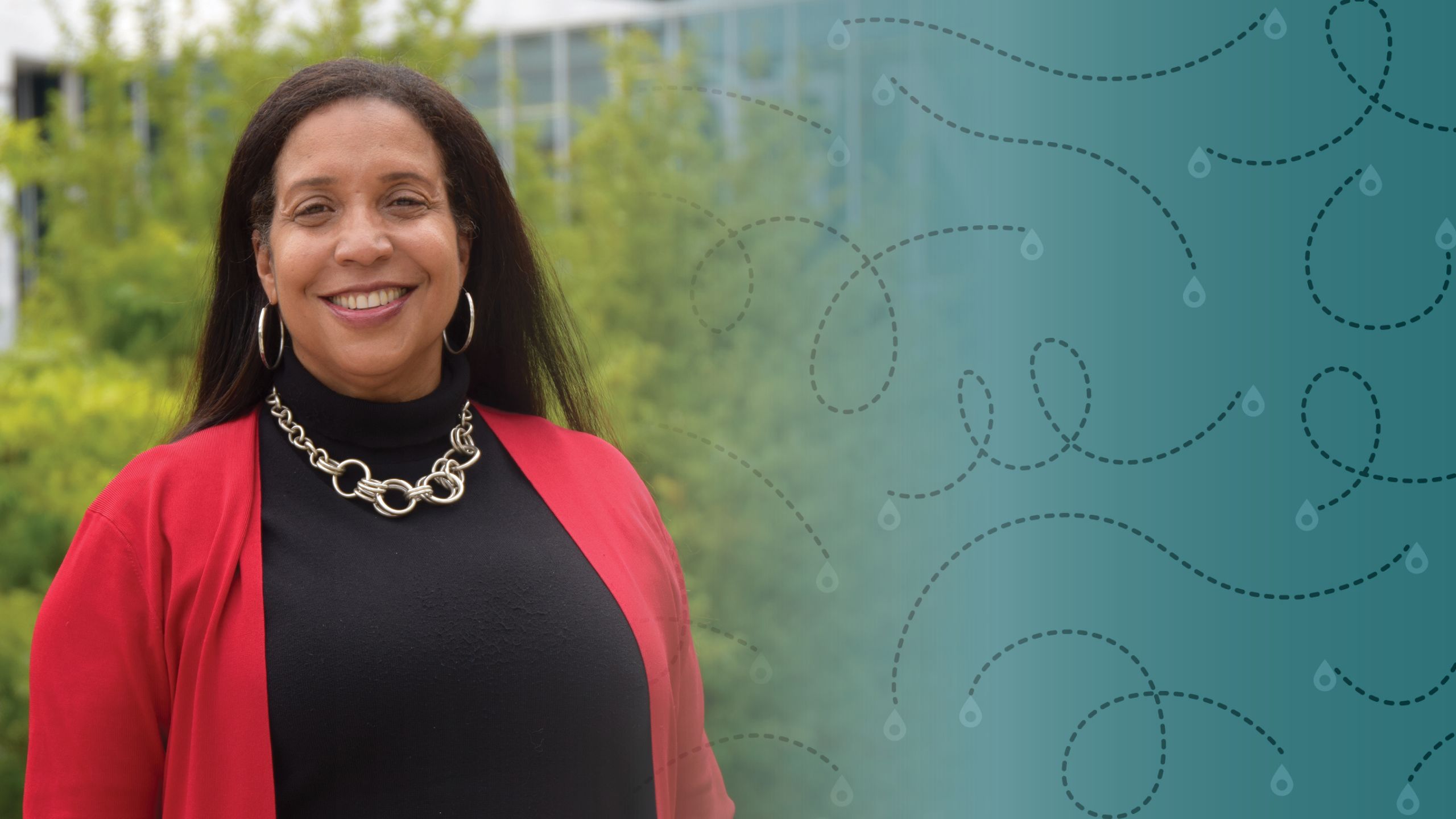
Lisa Flowers
Lisa Flowers
Lisa Flowers, director of Colposcopy Services at Grady Cancer Center, professor in the Department of Gynecology and Obstetrics at Emory University School of Medicine and member of Winship’s Discovery and Developmental Therapeutics Research Program, recently returned from Panama, where she has worked with colleagues for the past seven years to address cervical cancer among indigenous women.
During her latest visit, Flowers saw 80 women in two days, screening them for HPV and cervical cancer with Pap smears and follow-up colposcopy for those whose Pap test indicated possible HPV infection, precancerous or cancerous changes in the cervix or other abnormalities. Colposcopy is a procedure involving a magnifying device called a colposcope to visualize the cervix, the lower part of the uterus, for abnormalities and take biopsies if necessary.
Most of the women Flowers examined with colposcopy because their Pap test indicated some type of abnormality—such as inflammation—had no disease. Flowers says, “It really showed that Pap smear screening is not ideal in certain populations, and that the best thing to do is to actually do primary HPV testing.” Primary HPV testing screens for the presence of high-risk HPV types that can lead to cervical cancer. It can detect HPV infections sooner and is more sensitive than traditional Pap smear screening at detecting precancerous cervical lesions.
Cervical cancer is considered an “AIDS-defining” illness in women who are living with HIV because they are at higher risk of developing it, and it can indicate an advanced stage of HIV disease (AIDS). For this reason, Flowers also is working with a network of 15 clinics in Nigeria, each of which is screening 100 women with HIV using self-collection for primary HPV testing.
Flowers explains that the women are taught how to do self-collection of specimens by “Mentor Mothers,” a nationwide peer-based support network of women living with HIV who partner with new mothers recently diagnosed with HIV to improve the women’s access and retention in HIV care. She says self-collection involves “using a swab in their vagina and putting it in a solution for primary HPV testing to see if they need the next diagnostic test—colposcopy—to detect for HPV.”
If they end up being positive for high-risk, cancer-causing HPV types, Flowers says, “we are doing what we call digital colposcopy on their cervix and taking biopsies of areas that are abnormal. If we don’t find any abnormal areas, we are taking quadrant biopsies to be sure. If we see areas that are white on their cervix that are suspicious for pre-cancer, they get automatic treatment that day with either ablation (removal of tissue) or, if we think they may have a cancer, referral to an oncologist.” She adds, “We estimate there’s about a 30% to 40% positive rate of high-risk HPV.”
Two-way learning

HPV-caused cervical cancer is also a focus for Michael H. Chung, professor of medicine, global health and epidemiology at Emory and associate director of the Emory Global Health Institute.
For more than two decades, Chung has focused on infectious diseases and HIV research in Kenya and is currently working on research funded by the National Cancer Institute to improve cervical cancer screening and treatment in the country. He is leading several implementation science studies and clinical trials to determine how best to support busy government clinics to improve their cervical cancer screening rates and diagnostic accuracy. He and his colleagues are also determining how to treat pre-cancerous cervical lesions identified by HPV testing using thermal ablation, an inexpensive method that is widely available in resource-limited settings as a battery-operated device that can be handled by nurses. This research brings Emory together in partnership with some of the best research and medical institutions in Kenya including the University of Nairobi, Kenyatta National Hospital, Coptic Hospital, Kenya Medical Research Institute, and Aga Khan University.
Chung says there are methods to improve cervical cancer screening in Kenya that could potentially be used to improve prevention efforts in the state of Georgia as well. Incidence of cervical cancer here is 8 per 100,000 women-years, which is above the target of 4 identified by the World Health Organization as needed to eliminate cervical cancer. Certain groups in Georgia also appear to be at higher risk including Black women, who are more likely to die from cervical cancer than white women, and Korean American women who are less likely to have been screened with a Pap smear.
Chung says that using clinic navigators to help patients find their way from screening to treatment, apps on phones to facilitate communication between health providers and patients and inform them of their test results and implementing HPV self-testing to simplify screening are all being tested in Kenya to increase access to cervical cancer screening. He says these methods could be used in Georgia, too, “particularly in rural areas where there is limited access to specialized care and among groups who encounter greater barriers to screening.” With colleagues at Emory's Nell Hodgson Woodruff School of Nursing, Chung is exploring how to examine the implementation of these methods locally in Atlanta and has invited his research colleagues from the University of Nairobi and Kenyatta National Hospital to visit Winship Cancer Institute and share their best practices.
Clearly the partnerships that support crosstalk and collaboration between major research institutions like Emory University and the cancer and public health institutes in low- and middle-income countries offer many opportunities for “bidirectional” learning. Most importantly, they provide quantifiable benefits for the people of Georgia and beyond who count on Winship to provide world-class care and treatment for themselves and their loved ones dealing with cancer.
Ramalingam says, “Winship researchers who are leveraging the knowledge that exists here in collaborative opportunities in various parts of the world are directly helping to reduce the burden of cancer.” He adds, “This aligns with our growing stature as not just a nationally prominent cancer center, but as part of an internationally recognized research and clinical enterprise here at Emory. Emory University has a long track record of addressing global health problems. So, what Winship is doing is in keeping with the true tradition of our academic aspirations.”
Story by John-Manuel Andriote, an author and seasoned health/medical journalist, is Winship’s senior writer and editor of Winship Magazine.
Designed by Linda Dobson
Illustration by Alex Foster
Photography by Jenni Girtman
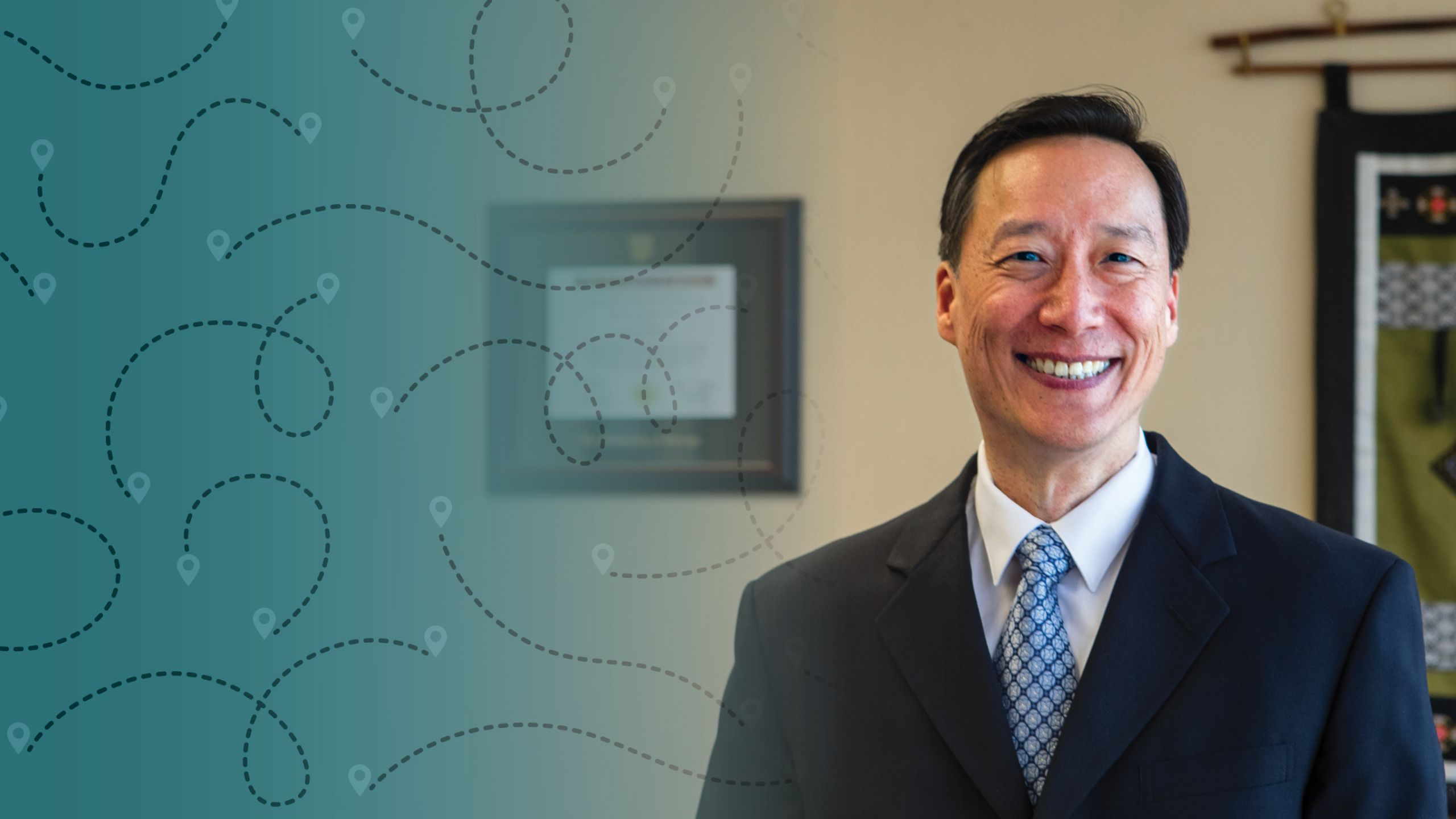
Michael H. Chung
Michael H. Chung
HPV-caused cervical cancer is also a focus for Michael H. Chung, professor of medicine, global health and epidemiology at Emory and associate director of the Emory Global Health Institute.
For more than two decades, Chung has focused on infectious diseases and HIV research in Kenya and is currently working on research funded by the National Cancer Institute to improve cervical cancer screening and treatment in the country. He is leading several implementation science studies and clinical trials to determine how best to support busy government clinics to improve their cervical cancer screening rates and diagnostic accuracy. He and his colleagues are also determining how to treat pre-cancerous cervical lesions identified by HPV testing using thermal ablation, an inexpensive method that is widely available in resource-limited settings as a battery-operated device that can be handled by nurses. This research brings Emory together in partnership with some of the best research and medical institutions in Kenya including the University of Nairobi, Kenyatta National Hospital, Coptic Hospital, Kenya Medical Research Institute, and Aga Khan University.
Chung says there are methods to improve cervical cancer screening in Kenya that could potentially be used to improve prevention efforts in the state of Georgia as well. Incidence of cervical cancer here is 8 per 100,000 women-years, which is above the target of 4 identified by the World Health Organization as needed to eliminate cervical cancer. Certain groups in Georgia also appear to be at higher risk including Black women, who are more likely to die from cervical cancer than white women, and Korean American women who are less likely to have been screened with a Pap smear.
Chung says that using clinic navigators to help patients find their way from screening to treatment, apps on phones to facilitate communication between health providers and patients and inform them of their test results and implementing HPV self-testing to simplify screening are all being tested in Kenya to increase access to cervical cancer screening. He says these methods could be used in Georgia, too, “particularly in rural areas where there is limited access to specialized care and among groups who encounter greater barriers to screening.” With colleagues at Emory's Nell Hodgson Woodruff School of Nursing, Chung is exploring how to examine the implementation of these methods locally in Atlanta and has invited his research colleagues from the University of Nairobi and Kenyatta National Hospital to visit Winship Cancer Institute and share their best practices.
Clearly the partnerships that support crosstalk and collaboration between major research institutions like Emory University and the cancer and public health institutes in low- and middle-income countries offer many opportunities for “bidirectional” learning. Most importantly, they provide quantifiable benefits for the people of Georgia and beyond who count on Winship to provide world-class care and treatment for themselves and their loved ones dealing with cancer.
Ramalingam says, “Winship researchers who are leveraging the knowledge that exists here in collaborative opportunities in various parts of the world are directly helping to reduce the burden of cancer.” He adds, “This aligns with our growing stature as not just a nationally prominent cancer center, but as part of an internationally recognized research and clinical enterprise here at Emory. Emory University has a long track record of addressing global health problems. So, what Winship is doing is in keeping with the true tradition of our academic aspirations.”
Story by John-Manuel Andriote, an author and seasoned health/medical journalist, is Winship’s senior writer and editor of Winship Magazine.
Designed by Linda Dobson
Illustration by Alex Foster
Photography by Jenni Girtman
The locations & the types of cancer Winship is addressing
Illustration by Alex Foster
Panama| HPV-caused cervical cancer in HIV+ women
Barcelona, Brazil, and in the US (working with Native American tribes in North and South Dakota; Minnesota; California) | Cigarette smoking cessation
Armenia, Georgia (country) | Cigarette smoking cessation
Kenya, Nigeria | Cervical cancer in HIV+ women (cervical cancer is an “AIDS-defining” illness in women living with HIV)
India | Head and neck cancer in men (caused by chewing tobacco and the betel nut, a popular ingredient in the preparation of the chewed mixture "paan"); cervical cancer (caused by HPV) and gall bladder cancer in women
An app developed in Nigeria—ready to use in rural Georgia
Lisa Flowers shares her enthusiasm about a phone app developed in Nigeria that she says could make an important difference right here in the rural areas of Georgia.
What Flowers calls the “digital colposcopy” uses a smartphone to provide the magnification needed to examine the cervix for abnormalities—and to capture photos. Colposcopy is a procedure that uses a magnifying device called a colposcope to examine the cervix for abnormalities and guide biopsies, if necessary. Flowers explains that digital colposcopy allows clinicians to mark biopsy sites, record their impressions and upload HPV test results and pathology images directly into the patient’s medical records.
Flowers says using the app allows some patients to be treated on the same day or brought back quickly if their condition appears to have worsened. Then they are monitored with primary HPV testing to confirm whether their disease is resolved.
“We realize that in rural Georgia there aren’t many clinicians trained to perform colposcopy or deliver treatment,” Flowers says. After applying vinegar to highlight abnormal areas of the cervix, clinicians can take biopsies or treat the area using thermal ablation—a handheld device that uses heat to destroy abnormal cells on the cervix. She says the procedure is well-tolerated, and the most patients need for discomfort is ibuprofen.
All this data goes into the app and the patient’s medical record and can be shared with a gynecologist, either in real time or later, who can determine whether to treat the patient or not based on the images and data held in the app. “It will be a teaching tool because all these cases are maintained within the cloud, so that clinicians get better and better,” Flowers says.
A colposcope is expensive, limiting its availability and use in resource-limited countries and areas of Georgia itself. Flowers says, “Having the app and the phone to be able to take the images where we can guide them and stay in communication with them, is a way by which we can empower frontline care teams in rural Georgia just by using an app that’s been created in Nigeria.”

An app developed in Nigeria—ready to use in rural Georgia
Lisa Flowers shares her enthusiasm about a phone app developed in Nigeria that she says could make an important difference right here in the rural areas of Georgia.
What Flowers calls the “digital colposcopy” uses a smartphone to provide the magnification needed to examine the cervix for abnormalities—and to capture photos. Colposcopy is a procedure that uses a magnifying device called a colposcope to examine the cervix for abnormalities and guide biopsies, if necessary. Flowers explains that digital colposcopy allows clinicians to mark biopsy sites, record their impressions and upload HPV test results and pathology images directly into the patient’s medical records.
Flowers says using the app allows some patients to be treated on the same day or brought back quickly if their condition appears to have worsened. Then they are monitored with primary HPV testing to confirm whether their disease is resolved.
“We realize that in rural Georgia there aren’t many clinicians trained to perform colposcopy or deliver treatment,” Flowers says. After applying vinegar to highlight abnormal areas of the cervix, clinicians can take biopsies or treat the area using thermal ablation—a handheld device that uses heat to destroy abnormal cells on the cervix. She says the procedure is well-tolerated, and the most patients need for discomfort is ibuprofen.
All this data goes into the app and the patient’s medical record and can be shared with a gynecologist, either in real time or later, who can determine whether to treat the patient or not based on the images and data held in the app. “It will be a teaching tool because all these cases are maintained within the cloud, so that clinicians get better and better,” Flowers says.
A colposcope is expensive, limiting its availability and use in resource-limited countries and areas of Georgia itself. Flowers says, “Having the app and the phone to be able to take the images where we can guide them and stay in communication with them, is a way by which we can empower frontline care teams in rural Georgia just by using an app that’s been created in Nigeria.”
More from Winship Cancer Institute



